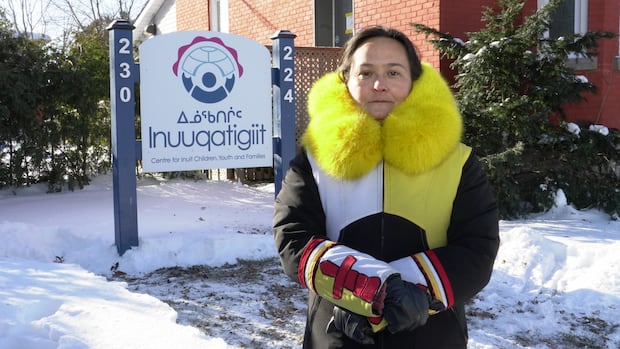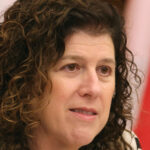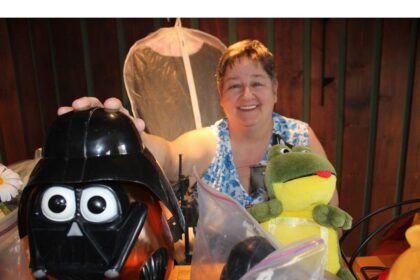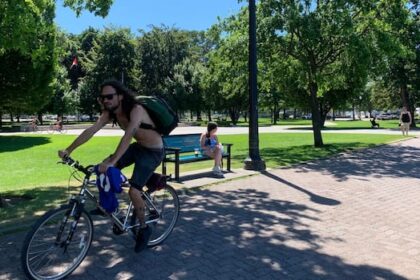Thunder BayThe Ontario Native Women’s Association is expanding its efforts to better represent Inuit women across the province. CEO Cora McGuire-Cyrette says the organization has launched its first Inuit Women’s Council and welcomed its first Inuk board member. The Ontario Native Women’s Association has launched its first Inuit Women’s CouncilRajpreet Sahota · CBC News · Posted: Oct 20, 2025 5:00 AM EDT | Last Updated: October 20Stephanie Mikki Adams is the executive director of Innuqatigit Centre for Inuit Children, Youth and Families and the newest board member at ONWA. (Simon Lasalle/CBC)As the Inuit population in Ontario continues to grow, the Ontario Native Women’s Association (ONWA) is taking steps to ensure Inuit women are better represented in its work and leadership.According to Statistics Canada, between 2016 and 2021, the Inuit population in Ontario increased by about 450 people, a roughly 11.7 per cent jump from 3,860 to 4,310. ONWA CEO Cora McGuire-Cyrette said the organization has long aimed to empower all Indigenous women. “While ONWA is, our headquarters are here in Fort William First Nation, we have branches all across Ontario, including in Ottawa, which has the highest population of Inuit outside of Inuit Nunangat,” she said. Ottawa Aboriginal Coalition breaks ground on Inuit women’s shelter McGuire-Cyrette noted that ONWA recently established an Inuit Women’s Council for the first time. Cora McGuire-Cyrette, the CEO of the Ontario Native Women’s Association poses for a photo. (Chondon Photography)“At the powwow that we just hosted on MMIWG, it was the first time the Qulliq was lit here in Thunder Bay because we recognize all Indigenous women, First Nation, Métis and Inuit are impacted by MMIWG and the crisis of violence against us,” she said.The council aims to create a space where Inuit women can actively participate in shaping programs and policies affecting their lives. “We also have councils, which are grassroots Indigenous women in their community who want to do community-based action. And so we’ve always been looking for more inclusion for other Indigenous women, such as Inuit and Métis women, because the majority of our membership is First Nations,” McGuire-Cyrette said.Inclusion, she added, is also about community connection. “One of the issues they face when they leave their territory and are living in communities like Thunder Bay is the isolation. And for me, as an Indigenous woman, it’s like, how do we bring in culture and community and how do we support all Indigenous women to have that sense of belonging,” asked McGuire-Cyrette.ONWA has partnered with Inuit leaders and organizations to ensure cultural teachings are integrated into its programming. “I particularly look at our new board member, Stephanie Mikki Adams. And she’s phenomenal. I have so much respect for her. I look at her as a mentor, as a role model of what leadership looks like,” McGuire-Cyrette said. Inclusion must go beyond token representation- Stephanie Mikki AdamsStephanie Mikki Adams, an Inuk leader from Rankin Inlet, Nunavut and the newest board member and secretary at ONWA, emphasized the importance of meaningful inclusion. “Indigenous is not a single identity. Inuit, First Nations and Métis each have distinct histories, cultures and knowledge systems. When we Inuit women are fully represented, it ensures that ONWA truly reflects the diversity of Indigenous women across Ontario and upholds its commitment to inclusion and cultural integrity,” explained Adams.Historically, Adams says, many Indigenous organizations have centred First Nations or Métis perspectives, leaving Inuit voices underrepresented. “It also allows ONWA to address the unique realities and challenges faced by Inuit women, such as those connected to northern and urban migration, language and cultural continuity, health and wellness disparities and systemic underrepresentation,” explained Adams. “Inclusion must go beyond token representation. Inuit women need space, resources and decision-making power to shape programs, policies and advocacy that affect their lives.”ABOUT THE AUTHORRajpreet Sahota is a bilingual journalist who reports for CBC News stations across Ontario. Tips and story ideas can be sent to rajpreet.sahota@cbc.ca
Wednesday, 17 Dec 2025
Canada – The Illusion
Search
Have an existing account?
Sign In
© 2022 Foxiz News Network. Ruby Design Company. All Rights Reserved.
You May also Like
- More News:
- history
- Standing Bear Network
- John Gonzalez
- ᐊᔭᐦᑊ ayahp — It happened
- Creation
- Beneath the Water
- Olympic gold medal
- Jim Thorpe
- type O blood
- the bringer of life
- Raven
- Wás’agi
- NoiseCat
- 'Sugarcane'
- The rivers still sing
- ᑲᓂᐸᐏᐟ ᒪᐢᑿ
- ᐅᑳᐤ okâw — We remember
- ᐊᓂᓈᐯᐃᐧᐣ aninâpêwin — Truth
- This is what it means to be human.
- Nokoma











